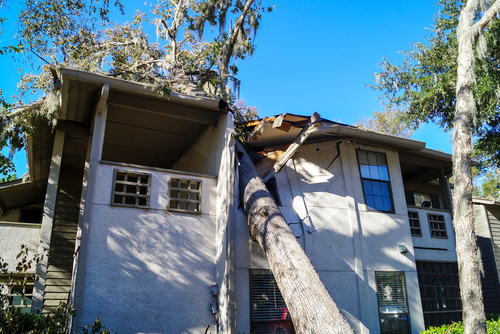A group of insurance industry associations and experts released a white paper this week that examines how the tragedies from Hurricane Andrew in 1992 ultimately paved the way for community safety innovations through modern building codes and enhanced regional mitigation initiatives.

The paper, entitled “It’s Not Just the Weather: The Man-Made Crises Roiling Property Insurance Markets,” was released on the 30th anniversary of the devastating and costly storm. It was produced jointly by the American Property Casualty Insurance Association (APCIA), the Reinsurance Association of America (RAA), the Association of Bermuda Insurers and Reinsurers (ABIR), and professor Robert Hartwig, Ph.D.
“Hurricane Andrew forever changed the way American communities prepared for natural disasters,” Hartwig, clinical associate professor of finance and director of the Risk and Uncertainty Management Center at the University of South Carolina, said. “At the time, it was the costliest natural disaster in the United States with an estimated $27.3 billion in insured losses. In its aftermath, communities and states ultimately instituted stronger building codes and provided more investment in resiliency – both of which have undoubtedly saved countless lives.”
However, the paper points out that 30 years later, there are new, growing property insurance crises in many states resulting from man-made events—legal system abuse, government interference, and fraud.
“Now, 30 years later, we are experiencing a new major catastrophe in states such as Florida, California, and Louisiana, except this one is man-made,” David Sampson, president & CEO of APCIA, said. “Unchecked plaintiff bar tactics, legal system abuse, fraud, and misguided government policies are having a significant impact on the availability and affordability of insurance for American families, individuals, and businesses. For example, collectively, these factors have driven the average Florida homeowner’s insurance policy to nearly $3,000 in 2022, roughly twice the U.S. annual average.”
In the last 10 years, according to the Florida Office of Insurance Regulation, $51 billion has been paid in insurance claims. Of that amount, roughly 71 percent went to attorneys’ fees and public adjusters, while only 8 percent went to claimants.
“Unfortunately, this has all occurred even though Florida has not experienced a direct hit from a hurricane since 2018, underscoring the impact of disruptions these man-made forces have on the marketplace,” Frank Nutter, president of the RAA, said. “In Florida alone, seven insurers went insolvent in the last two years, and 14 other companies have stopped writing new policies to avoid similar stability risks. According to a report from the state’s insurance regulator, Florida accounted for 79 percent of the nation’s homeowners’ insurance claim lawsuits while making up only nine percent of the nation’s homeowners’ insurance claims. While Florida’s governor and legislature implemented positive reforms during a special session earlier this year that are a step in the right direction, it will take time and additional reforms to stabilize Florida’s volatile property insurance market.”